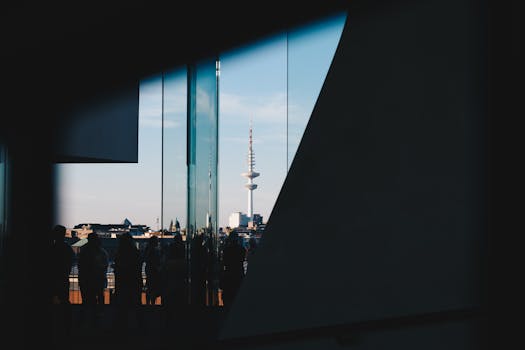Penggunaan atap spandek polycarbonate memiliki dampak lingkungan yang perlu diperhatikan.
Polycarbonate spandek roofs have become increasingly popular in recent years due to their durability, versatility, and aesthetic appeal. However, it is important to consider the environmental impact of using these roofs. In this article, we will explore the various ways in which polycarbonate spandek roofs can affect the environment.One of the main environmental concerns associated with polycarbonate spandek roofs is their production process. The manufacturing of polycarbonate involves the use of fossil fuels, which contribute to greenhouse gas emissions and climate change. Additionally, the extraction of raw materials for polycarbonate production can have negative impacts on ecosystems and biodiversity.Furthermore, the installation of polycarbonate spandek roofs can also have environmental implications. The process often involves the use of heavy machinery and equipment, which can contribute to noise pollution and air pollution. Additionally, the transportation of these roofs from the manufacturing site to the installation location can result in carbon emissions.Another aspect to consider is the lifespan of polycarbonate spandek roofs. While these roofs are known for their durability, they are not immune to wear and tear. Over time, exposure to harsh weather conditions and UV radiation can cause the material to degrade. As a result, the roofs may need to be replaced, leading to additional waste and environmental impact.In terms of energy efficiency, polycarbonate spandek roofs have both advantages and disadvantages. On one hand, the translucent nature of the material allows natural light to penetrate, reducing the need for artificial lighting during the day. This can result in energy savings and a reduced carbon footprint. On the other hand, the same translucency can also lead to increased heat gain during hot weather, potentially increasing the need for air conditioning and energy consumption.Water management is another important consideration when it comes to polycarbonate spandek roofs. The smooth surface of these roofs can cause rainwater to run off quickly, potentially leading to increased stormwater runoff. This can contribute to flooding and erosion, as well as the pollution of water bodies with contaminants from the roof surface.To mitigate the environmental impact of using polycarbonate spandek roofs, there are several steps that can be taken. Firstly, it is important to choose a reputable manufacturer that prioritizes sustainability and environmental responsibility in their production processes. Additionally, proper installation techniques should be followed to minimize the use of heavy machinery and reduce the associated pollution.Regular maintenance and inspection of polycarbonate spandek roofs can also help extend their lifespan and reduce the need for premature replacement. This includes cleaning the roofs to remove dirt and debris, as well as applying protective coatings to enhance their resistance to UV radiation and weathering.In conclusion, while polycarbonate spandek roofs offer numerous benefits, it is crucial to consider their environmental impact
. From the production process to installation and maintenance, every step can have implications for the environment. By making informed choices and taking proactive measures, it is possible to minimize the negative effects and ensure a more sustainable use of these roofs.
The Environmental Impact of Using Polycarbonate Spandek Roofs

Polycarbonate spandek roofs have become increasingly popular in recent years due to their durability, versatility, and aesthetic appeal. However, it is important to consider the environmental impact of using these roofs. In this article, we will explore the various ways in which polycarbonate spandek roofs can affect the environment.One of the main environmental concerns associated with polycarbonate spandek roofs is their production process. The manufacturing of polycarbonate involves the use of fossil fuels, which contribute to greenhouse gas emissions and climate change. Additionally, the extraction of raw materials for polycarbonate production can have negative impacts on ecosystems and biodiversity.Furthermore, the installation of polycarbonate spandek roofs can also have environmental implications. The process often involves the use of heavy machinery and equipment, which can contribute to noise pollution and air pollution. Additionally, the transportation of these roofs from the manufacturing site to the installation location can result in carbon emissions.Another aspect to consider is the lifespan of polycarbonate spandek roofs. While these roofs are known for their durability, they are not immune to wear and tear. Over time, exposure to harsh weather conditions and UV radiation can cause the material to degrade. As a result, the roofs may need to be replaced, leading to additional waste and environmental impact.In terms of energy efficiency, polycarbonate spandek roofs have both advantages and disadvantages. On one hand, the translucent nature of the material allows natural light to penetrate, reducing the need for artificial lighting during the day. This can result in energy savings and a reduced carbon footprint. On the other hand, the same translucency can also lead to increased heat gain during hot weather, potentially increasing the need for air conditioning and energy consumption.Water management is another important consideration when it comes to polycarbonate spandek roofs. The smooth surface of these roofs can cause rainwater to run off quickly, potentially leading to increased stormwater runoff. This can contribute to flooding and erosion, as well as the pollution of water bodies with contaminants from the roof surface.To mitigate the environmental impact of using polycarbonate spandek roofs, there are several steps that can be taken. Firstly, it is important to choose a reputable manufacturer that prioritizes sustainability and environmental responsibility in their production processes. Additionally, proper installation techniques should be followed to minimize the use of heavy machinery and reduce the associated pollution.Regular maintenance and inspection of polycarbonate spandek roofs can also help extend their lifespan and reduce the need for premature replacement. This includes cleaning the roofs to remove dirt and debris, as well as applying protective coatings to enhance their resistance to UV radiation and weathering.In conclusion, while polycarbonate spandek roofs offer numerous benefits, it is crucial to consider their environmental impact
